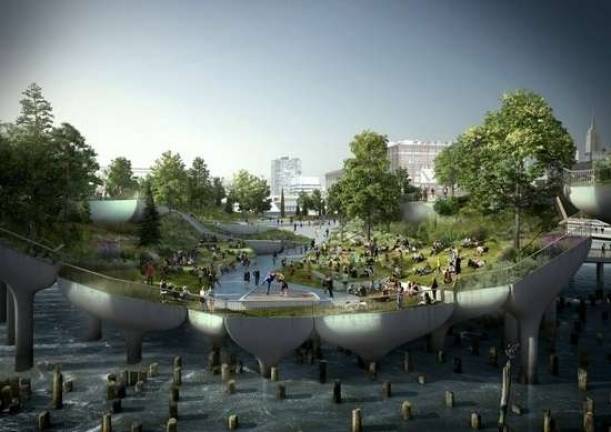pier 55 project moves ahead

Small-scale construction has begun on the Pier 55 island project along the Hudson River despite continued legal entanglements.
The park’s developers are mired in a legal battle with the City Club of New York and although an appeals panel halted construction earlier summer until the case was resolved, the panel partially lifted the injunction recently, allowing some work to begin.
Construction crews can only install nine piles — structural supports on which the park island will rest — into the water until a court decision, possibly as soon as next month.
A statement provided by the public relations firm representing the project — which is spearheaded and largely funded by media mogul Barry Diller and the designer Diane von Furstenberg — called the City Club’s legal efforts “a charade” and an obstacle to community wishes for the park.
“Now that both state and federal courts have denied its demand for an injunction, the City Club should take this cue to finally end its absurd crusade against the wishes of the community,” the statement said.
The City Club’s president, Michael Gruen, though, said the park will be less of a community amenity than developers are advertising. Besides its high development costs, as well as that of future maintenance and upkeep, Gruen said there are ecological and social consequences to creating yet another waterfront development.
“We need to think of open water as a sanctuary,” he said.
Several factions of community groups and individuals have voiced opposition against the project, including the Hudson River Riverkeeper.
Robert Buchanan, another critic of the park, said the project’s scale called for more research and community outreach by the park’s developers.
Buchanan, who taught a course at the New School called “Liquid Cities” focusing on sustainable, waterside urban spaces, said the proposed park at Pier 55 could have been planned with a more ecological frame of reference. Instead of a floating island, which requires complex construction, the development could have been created with “softer edges,” such as marshes or beaches, he said.
The park’s developers completed an environmental assessment prior to approval but Buchanan called that insufficient. He suggested that a more comprehensive environmental impact survey would have taken better stock of the project.
“An EIS is a longer process and provides more openings for public conversation,” he said.
Construction can only get fully under way once the legal issues are resolved. The park has met all other perquisites for construction, including approval from Community Board 2, the State Department of Conservation and the U.S. Army Corps of Engineers.
Gruen said he is hopeful the court will bar the effort. “I think we have very good grounds to win our case,” he said.
Buchanan was more concerned about what kind of legacy the park will leave. He used to teach students from the New School how to build and pilot small boats in the area where the park is set to be built. Boaters who launch from Chelsea Piers enjoy the free, open space Pier 55 provides.
“I’m concerned about the precedent this park will set,” he said.